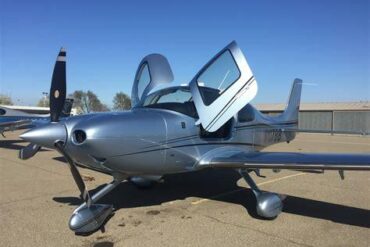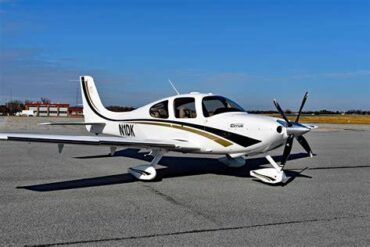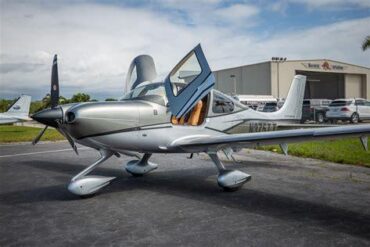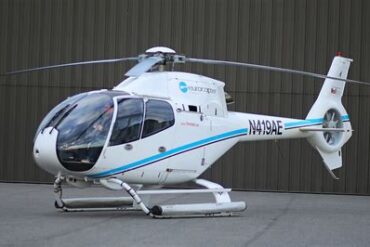The Cirrus SR20 is a highly regarded aircraft in the general aviation community, known for its advanced safety features, modern avionics, and sleek design. Whether you are a prospective buyer or simply curious about the financial aspects of owning this aircraft, understanding the price and operating costs is crucial. In this comprehensive guide, we will delve into the initial purchase price, ongoing operating expenses, and other financial considerations associated with owning a Cirrus SR20.
Acquisition Cost: Understanding the Purchase Price of a Cirrus SR20
When considering the purchase of a Cirrus SR20, the initial acquisition cost is a significant factor. As of 2024, the new Cirrus SR20 price typically ranges from $500,000 to $580,000 depending on the configuration and options selected. These prices can fluctuate based on factors such as avionics packages, interior upgrades, and additional safety features.
Factors Influencing the Purchase Price
-
Avionics Packages: Cirrus offers various avionics configurations, with the most advanced options including the Cirrus Perspective+ by Garmin. This package, while more expensive, provides enhanced situational awareness and autopilot capabilities, which can significantly increase the aircraft’s price.
-
Interior Upgrades: The SR20 can be customized with a range of interior finishes. Premium leather seats, custom color schemes, and upgraded materials can add several thousand dollars to the base price.
-
Safety Features: Cirrus is renowned for its Cirrus Airframe Parachute System (CAPS), a standard feature in all SR20s. However, additional safety enhancements, such as the optional Flight Into Known Icing (FIKI) system, can further increase the purchase price.
Depreciation: Long-Term Value Considerations
Aircraft depreciation is an essential aspect of ownership. The Cirrus SR20 generally holds its value well compared to other aircraft in its class, thanks in part to its modern technology and safety features. However, like all aircraft, the SR20 does depreciate over time. On average, you can expect an annual depreciation rate of 7-10% during the first few years of ownership. After the initial steep decline, the rate of depreciation tends to stabilize.
Financing Options for a Cirrus SR20
Given the significant upfront cost, many buyers opt for financing. Aircraft loans typically require a down payment of 15-20% of the purchase price, with loan terms ranging from 10 to 20 years. Interest rates vary based on the borrower’s creditworthiness and market conditions, but they generally fall within the 4-6% range as of 2024.
Operating Costs: A Detailed Breakdown
Beyond the purchase price, the operating costs of the Cirrus SR20 are a crucial factor in determining the total cost of ownership. Operating costs can be categorized into fixed costs and variable costs.
Fixed Costs
Fixed costs remain relatively stable regardless of how much the aircraft is flown. These include:
-
Hangar Fees: Depending on location, hangar fees can range from $300 to $1,000 per month. Coastal or metropolitan areas typically have higher fees.
-
Insurance: Annual insurance premiums for a Cirrus SR20 typically range from $6,000 to $12,000. The cost of insurance is influenced by factors such as the pilot’s experience, the aircraft’s hull value, and the intended use (private or commercial).
-
Annual Inspection and Maintenance: The Cirrus SR20 requires an annual inspection, which can cost between $3,500 and $6,000. This inspection ensures the aircraft is airworthy and identifies any maintenance needs. Additional maintenance costs for wear and tear, such as replacing tires or brakes, can add another $2,000 to $4,000 annually.
Variable Costs
Variable costs fluctuate based on the number of flight hours. These include:
-
Fuel Costs: The Cirrus SR20 is equipped with a Continental IO-360-ES engine, which burns approximately 10 gallons per hour (GPH) of 100LL avgas. With the average price of avgas around $6 per gallon in 2024, the hourly fuel cost is roughly $60. If you fly 100 hours per year, this translates to an annual fuel cost of $6,000.
-
Oil Changes: Regular oil changes are necessary to keep the engine running smoothly. The cost of an oil change is approximately $200, and it’s recommended every 50 flight hours.
-
Landing and Handling Fees: Depending on the airport, landing fees can range from $10 to $50 per landing. Handling fees, which cover services like refueling and ground support, vary but can add an additional $20 to $100 per visit.
Total Annual Operating Costs
To provide a clearer picture, let’s calculate the total annual operating costs for a typical Cirrus SR20 owner who flies 100 hours per year:
| Expense | Annual Cost |
|---|---|
| Hangar Fees | $3,600 – $12,000 |
| Insurance | $6,000 – $12,000 |
| Annual Inspection | $3,500 – $6,000 |
| Additional Maintenance | $2,000 – $4,000 |
| Fuel Costs (100 hrs) | $6,000 |
| Oil Changes | $400 |
| Landing/Handling Fees | $500 – $2,000 |
| Total Annual Operating Cost | $21,500 – $42,400 |
These figures represent a typical range, but individual experiences may vary based on location, usage, and unforeseen maintenance needs.
Resale Value: Long-Term Investment Perspective
As mentioned earlier, the Cirrus SR20 tends to retain its value better than many other aircraft. A well-maintained SR20 with updated avionics and regular service records can command a higher resale price. On average, a 5-year-old Cirrus SR20 with moderate flight hours can sell for $350,000 to $450,000.
Factors Affecting Resale Value
-
Total Flight Hours: Aircraft with fewer flight hours generally have a higher resale value, as they are perceived to have less wear and tear.
-
Avionics and Upgrades: Aircraft equipped with the latest avionics and safety features are more desirable in the secondary market.
-
Service History: A complete and transparent service history, including all maintenance records, significantly boosts resale value.
Conclusion: Weighing the Costs and Benefits of Owning a Cirrus SR20
Owning a Cirrus SR20 is a significant financial commitment, but for many, the benefits outweigh the costs. The SR20’s advanced safety features, modern avionics, and strong resale value make it an attractive option for pilots seeking a reliable and technologically advanced aircraft. By understanding the purchase price, operating costs, and long-term value of the Cirrus SR20, prospective owners can make informed decisions that align with their financial and flying goals.
Investing in a Cirrus SR20 is not just about the initial purchase; it’s about understanding and managing the ongoing costs to ensure a rewarding and sustainable ownership experience.


















